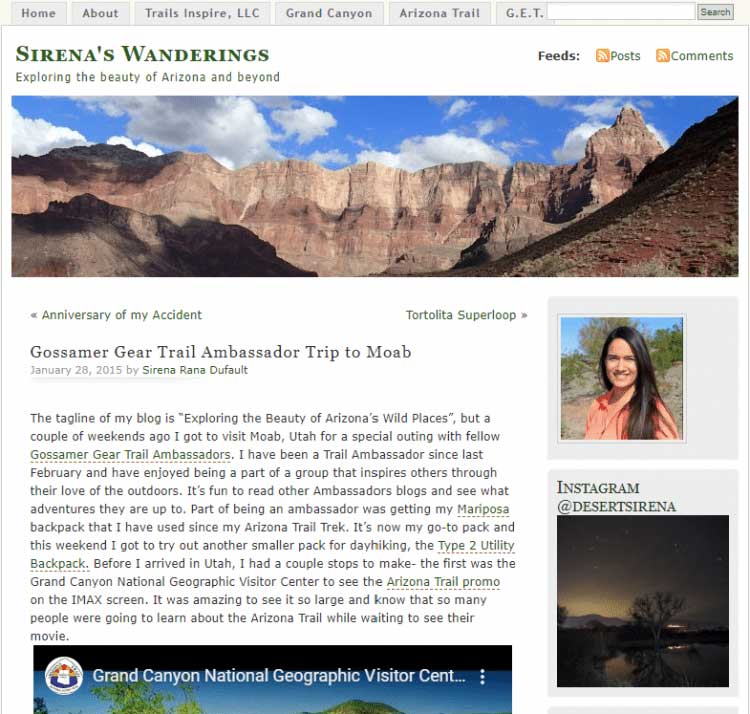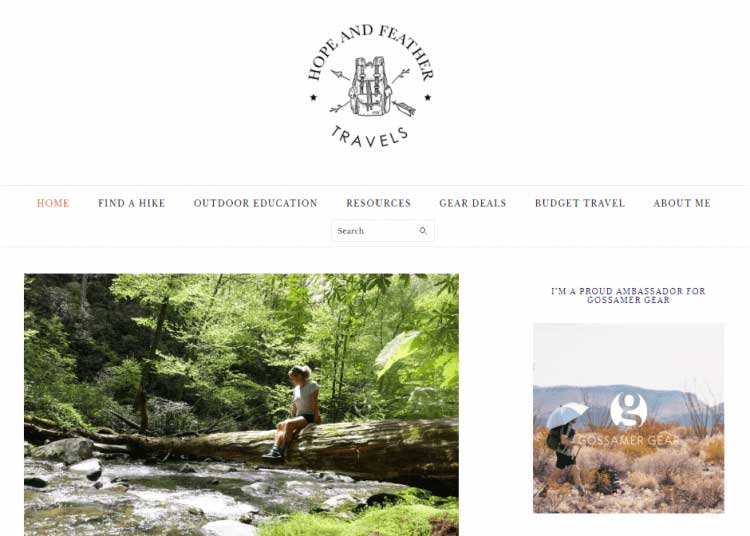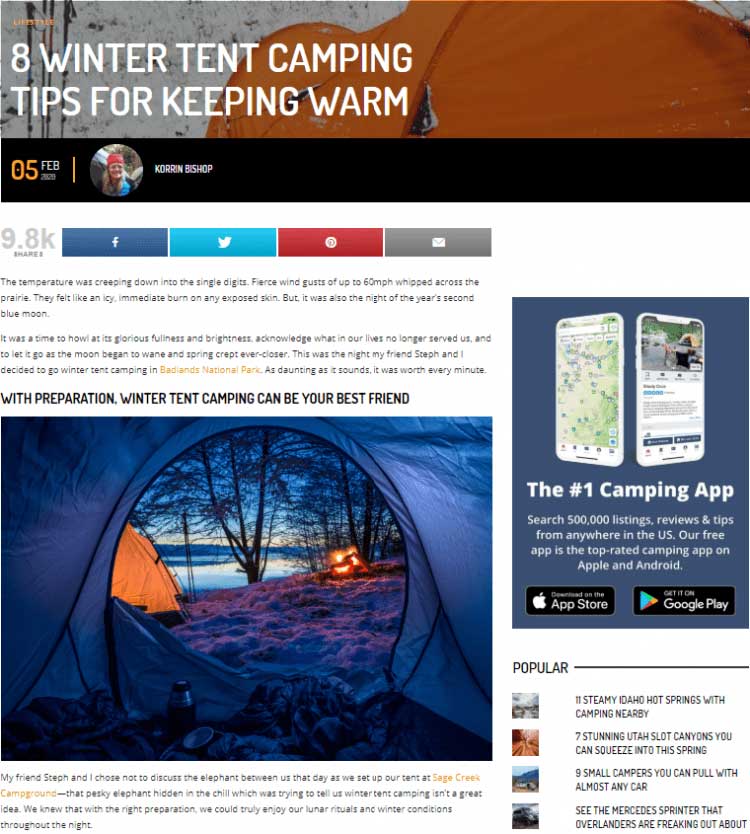4 Donor Relationship Lessons From Outdoor Businesses

The outdoor recreation economy grew 5% annually between 2005 and 2011, despite the recession that caused several other sectors to reduce. A major driver of the industry’s consistent year-over-year growth is the dedication outdoor businesses have to building authentic relationships with customers, just like how nonprofits aim to do with their donors.
When we look at how small companies in the cottage industry, in particular, succeed at building relationships at scale, we can glean tips on how nonprofits can also grow while maintaining emotional connections with supporters along the way.
Below, we dive into how four cottage industry brands scaled their reach while strengthening customer relations. Each brand’s tactics and strategies provide donor relationship lessons for nonprofits to then take and put into practice.
1. Talk to Your Audience Like You’re Talking to a Friend
Ninety percent of customers are more likely to make a purchase if a brand offers them a personalized experience. Further, that personalization can build brand loyalty among your audience.
As a nonprofit, a base of loyal supporters helps you expand your reach, retain donors, and maintain a pipeline of volunteers. If you’re able to speak with your donors in a casual, yet informative, way, it can help establish those long-term, dedicated relationships.
The Cottage Industry Brand
She Explores started in 2014 as a small blog about women in the outdoors. Since then, they’ve rebranded to Ravel Media, an outdoor creative media agency that hosts two podcasts, features hundreds of personal essays and interviews, and engages with over 200,000 followers on Instagram.
Personal engagement on the right channels, along with a casual and informative tone, took a mission-driven idea for the outdoor industry and grew it into a full-scale media platform with a huge audience.
Takeaways for Your Nonprofit
Consider the Tone of Your Communications
Avoid using industry jargon and acronyms, as these create a wall between insiders who don’t need an explanation for those terms, and everyone else who might not understand what you’re talking about. You should also be aware of speaking too formally with your audience, which can be equally polarizing.
For example, consistently responding to a complaint with the following might feel overly formal, impersonal, and scripted:
“We apologize for the inconvenience.”
Instead, you could craft a response that plays to a conversational tone that makes the audience feel as if there’s a real human on the other side:
“We’re sorry that happened, and we’d love to hear more about the issues you experienced. Please send us a direct message and we’ll make sure to get you the support you need.”
Don’t Make Each Touchpoint an Ask
It’s easy to remember to reach out to your donors when you’re asking for donations, but you must also include other stewardship touchpoints that aren’t asking for a gift. Relationships are give and take, so send communications that engage donors on levels beyond an appeal.
Free Download: 9 Email Templates to Engage Donors Year-Round
For example, you can send birthday notes, handwritten thank you letters, blog posts diving into educational topics, donor surveys, or newsletters that showcase your impact.
In this Instagram post, She Explores asks its audience to join its upcoming event.
In this second Instagram post, She Explores doesn’t ask its audience for anything, but rather offers a thought-provoking question that invites conversation.
Think About the Types of Media You Use
She Explores sends a newsletter that always opens with a relatable note from its founder. They also leverage Instagram to ask their community thought-provoking questions to increase engagement.
Similarly, you should find the types of media your donors use most, and then meet them where they are. This can help establish personalized connections and relationships as you speak to them in a relatable way through the channels they already use.

On average, marketing campaigns that use brand ambassadors earn $6.50 for each dollar spent. A brand ambassador is someone who believes in your work, tells other people why they love it, and encourages an audience to take action.
Aside from that, leveraging brand ambassadors is an easy way to grow your nonprofit’s reach and forge personal relationships with new supporters.
The Cottage Industry Brand
Gossamer Gear started 20 years ago, making a few dozen backpacks in their founder’s garage. Today, they’re a leader in the lightweight backpacking movement, sending their expanded product line around the world and winning impressive outdoor industry awards for their work.
Their growth is rooted in their team of brand ambassadors who hit the trails, attend gear conventions, and publish on media outlets to share their experiences with Gossamer Gear products. In many ways, this has built a community around the company.
Below is an example of a brand ambassador who wrote a blog on her own website about her experience with Gossamer Gear on the trail.

Takeaways for Your Nonprofit
Your nonprofit can find brand ambassadors through a variety of channels, including:
- Board Members – By default, all board members should be brand ambassadors for your nonprofit, as they have joined to support and champion your mission
- Repeat Volunteers – If a person enjoys volunteering with your organization enough to volunteer again, you should ask them to share that experience with others as brand ambassadors
- Repeat Donors – If a donor has chosen to give a monthly contribution to your nonprofit, as brand ambassadors they can explain to others why they trust you with their donation
Once your nonprofit has established a team of brand ambassadors, they’ll need some guidance for effective activation. How each brand ambassador shares your nonprofit’s story and their personal connection will depend on their interests and strengths. Here are some guiding suggestions you can provide them:
- Share about your nonprofit at a meeting for another group they’re involved with, such as Toastmasters or Rotary Club
- Write an op-ed for the local paper or a guest blog for a related publication that describes why they support your work
- Create individual fundraising events through their social media accounts or within their workplace to support your nonprofit
- Recruit additional volunteers for your next event
- Wear a shirt with your logo on it or add a bumper sticker to their car showing they support your nonprofit
- Invite their friends to your next fundraising event

3. Create Relevant and Useful Content
Content marketing builds trust with your audience by not simply telling them what they should buy or do, but rather offering them relevant, useful information that can inform their decisions. If your nonprofit’s content is appropriately geared toward your audience, they will recognize you as an expert in your field. Having that status will allow you to grow your nonprofit as more referrals come your way through genuine connections to your content.
The Cottage Industry Brand
The Dyrt is a camping app that launched in 2016 with a database of 17,000 campgrounds. They made heavy use of content marketing through their online magazine, which has helped grow their reach to over 500,000 user-submitted locations, reviews, and tips for campgrounds across the United States.
Content marketing is about creating value for your customers. For The Dyrt, this meant hiking and travel guides dripping with local knowledge, as well as tips and tricks for first-time campers. This content builds trust with The Dyrt’s audience which, in turn, helps establish long-term relationships with their audience that are founded on trust.

Takeaways for your Nonprofit
When it comes to content marketing, your nonprofit can take a similar approach that markets your mission, work, and campaigns by discussing the issues, advancements, or exciting opportunities in your world. For example, if you’re a nonprofit focused on children’s literacy, you could write:
- Blogs about the value in reading books over watching television
- Tip sheets that help parents and teachers make reading fun for children
- Emails that show how your peer-to-peer fundraisers take action in their own communities
In all of these, your call to action at the end could draw attention to a specific initiative you’re working on to advance the cause, like a fundraising campaign or volunteer opportunity.
No matter which format you choose for your content, you want to make sure you have the resources to keep it consistent. Having a blog or social media account where your last post was several months ago doesn’t inspire trust in your readers and negatively impacts the flow of traffic to your site.
Consistency with publication also brings a sense of expectation for your audience. They’ll come to know your cadence, expect to see new content on specific days, and actively engage with it as part of their daily routine when it publishes.
4. Focus on Creative Problem-Solving
As you educate donors about your cause and issue you’re solving, focus as much light on the solution that you’re bringing to the table. How exactly are you addressing an angle of the problem? Are you employing creative ways to advance your work? This ties in directly to donors’ desires to know exactly where their gifts would be going. Show them the specific roles they’re playing in your solution.
The Cottage Industry Brand
Oru Kayak set out to make kayaks—that is their mission. But they began manufacturing those kayaks in a highly creative way, making them both portable and foldable.
In 2012 they were a three-person team. By 2014, they’d shipped over 3,000 kayaks around the world, appeared on ABC’s Shark Tank, and tripled their staff.
Over the years, they’ve been able to connect with their customer base by making kayaking more accessible to people who don’t have the space for a traditional boat. And their messaging centers on that creative approach.
Takeaways for your Nonprofit
Emphasize the specific approach you’re taking to solve a problem and advance your mission, and especially highlight any creative methods. For example, let’s say your mission is to reduce the number of stray and feral cats in your county.
As part of your work, you manage an animal shelter, educate the public on the issue, and operate a call line for people to report stray or feral cats in their neighborhoods. Not only that, but you’re also the only nonprofit animal shelter in your region running a Trap-Neuter-Return (TNR) program that is directly and humanely addressing the issue. Focus around these points to elevate your mission and grow support.
Grow Your Nonprofit By Focusing on How You Connect With Your Donors
Like the cottage industry of the outdoor market, your nonprofit is filled with entrepreneurial, mission-driven people. As you grow your nonprofit, you can borrow strategies from the brands listed here and apply the donor relationship lessons in each section to ensure that you’re able to balance that growth with valuable connections to your donors. If you’d like even more insight and donor relationship lessons, make sure to download our guide below.

13 Donor Retention Email Templates



